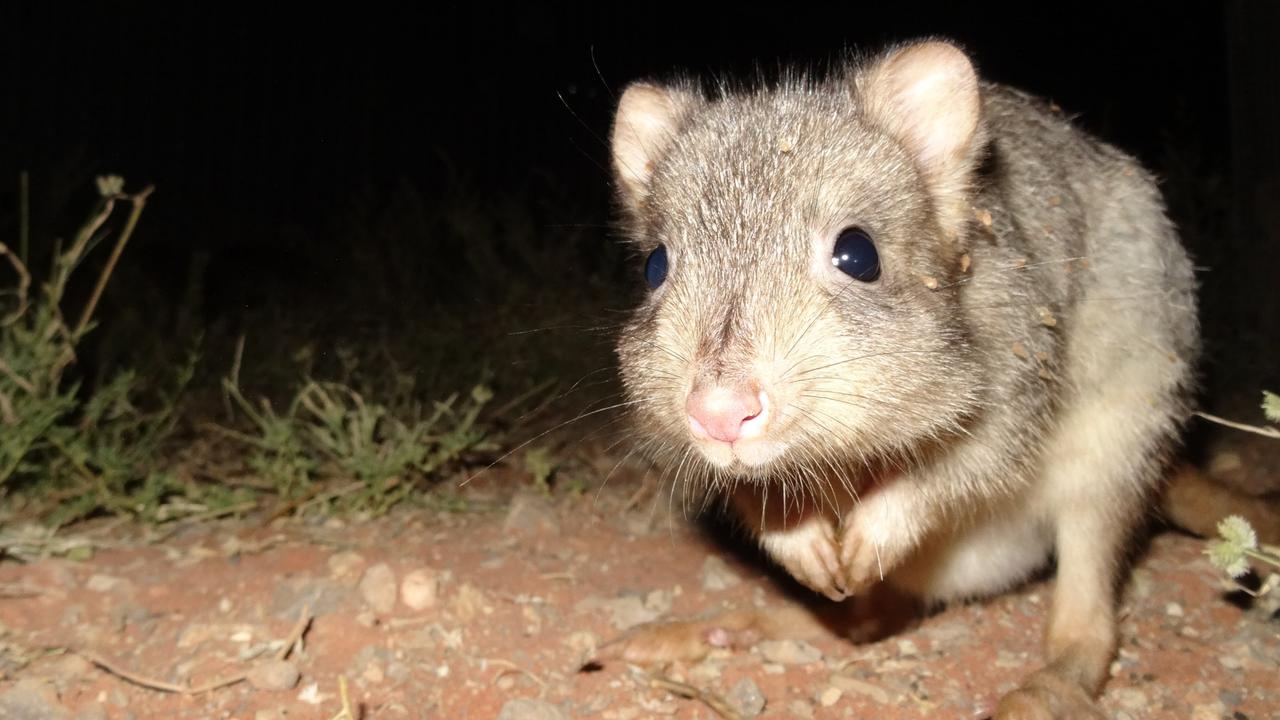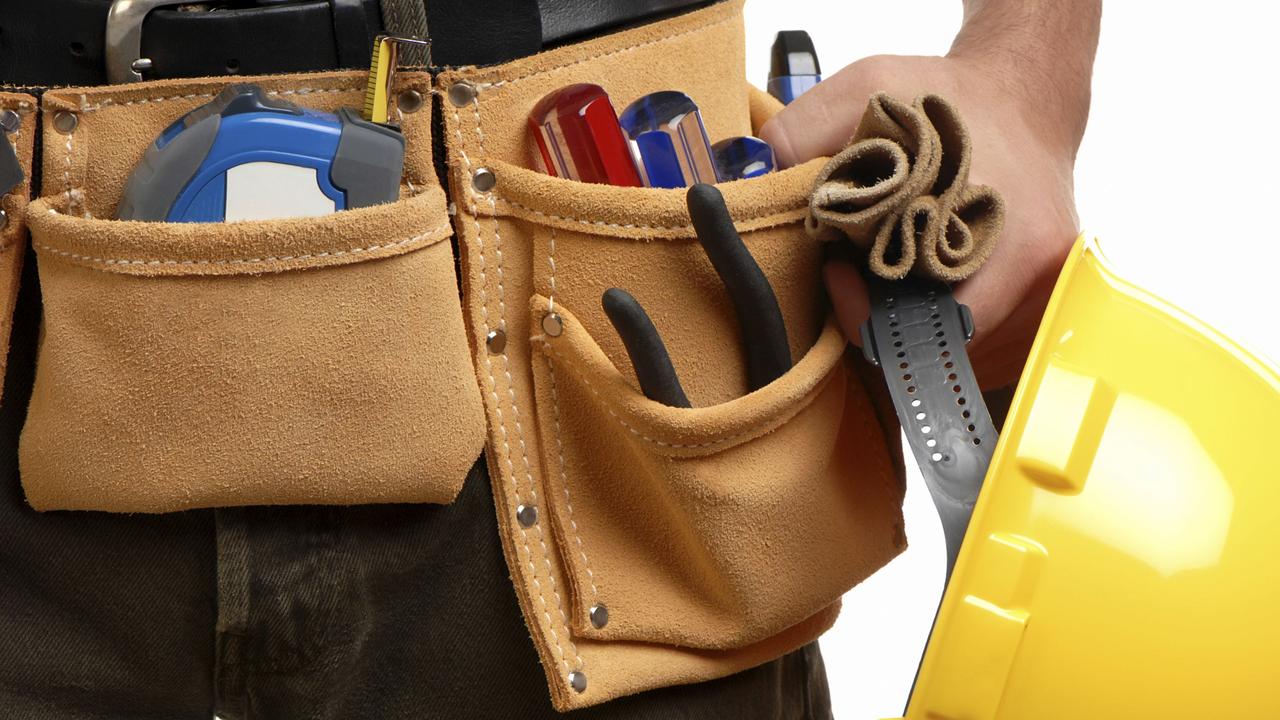Return of the mysterious giant Marree Man geoglyph in the desert sands
EXCLUSIVE: THE Marree Man is back. And the mystery of how the 4.2km tall, 28km outline etching on the southeastern edge of Lake Eyre came to be in the first place finally may have been partially solved.
SA News
Don't miss out on the headlines from SA News. Followed categories will be added to My News.
- Nature has brushed away world’s second largest geoglyph
- SA’s X-Files: Marree Man, Tantanoola tiger and Nullarbor Nymph
- Marree Hotel publican leads push to revive Marree Man
THE Marree Man is back.
And the mystery of how the 4.2km tall, 28km outline etching on the southeastern edge of Lake Eyre came to be in the first place finally may have been partially solved.
The giant figure of an Aboriginal man — the second biggest geoglyph recorded — had all but faded away as rain, wind and growth took its toll in the years after the astonishing figure’s discovery in 1998.
Last year the Marree Man could no longer be seen on Google Maps and local tourism operators called for its rejuvenation, estimating it could bring in about $22 million in tourism benefits annually.
Now modern technology and some dedicated locals have stepped in and restored the Marree Man to his former glory.
Marree Hotel owners Phil and Maz Turner and William Creek Hotel owner Trevor Wright joined forces, and funds, to breathe new life into the Marree Man.
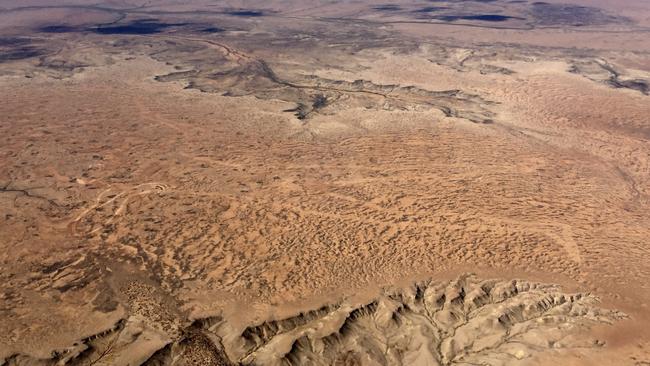
Mr Turner said the restoration was done with the blessing of the Arabana Aboriginal Corporation.
“We decided to do something about it, so the Marree Man is back,” Mr Turner said.
“We didn’t really get any (government) permission — we just did it — but there were a lot of people aware of it.”
While there is much debate about how the artwork was created, the restoration involved two surveyors in a buggy, plotting the course using mapping software, followed by a grader.
The grader cut 10cm into the ground to restore the faded outline of the figure.
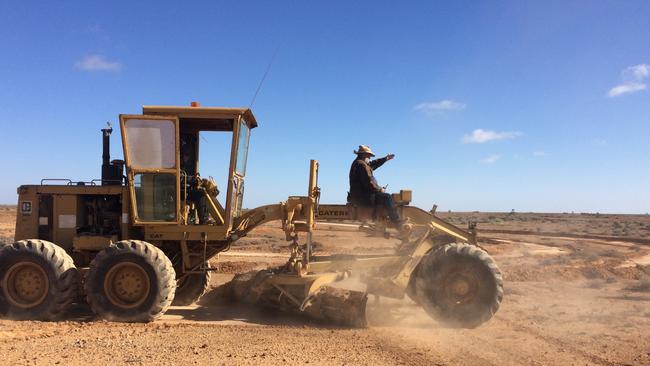
The group began restoring the artwork at dawn on Monday, working almost 12 hours each day until 2pm on Friday, when the job was done.
“I just had the most extraordinary week, following the same sort of tracks the original creator did,” Mr Turner said.
“That will probably last about 15 years. It’s a gift to the indigenous community and they’ve now got the opportunity to look after it.”
Mr Turner, 65, said he felt compelled to help keep the Marree Man intact to honour those who originally created it and to give the Far North a year-round tourism attraction, unlike Lake Eyre which only attracts significant numbers of visitors on the rare occasion it fills with water.
“South Australia now has a long-term attraction in the far north of the state ... that can be seen all year around,” he said.
“It’s an amazing sight from the air. If you look up the definition of art, there is nothing more artistic than this particular image.”
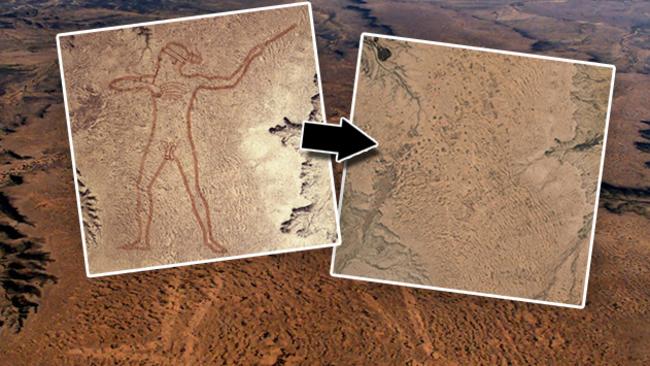
Mr Turner said he had “a lot of respect” for the original creator or creators and hoped if they were still around they would be pleased.
“I just hope that whoever created it, that we’ve done justice to it and we respect them for their work and initiative,” he said. “What we didn’t want to do is do a different type of image.
“This was about respecting the creator’s original work.”
While mystery surrounds the original creator, how they did it or why they did it, Mr Turner suspects he has discovered one of the Marree Man’s secrets.
He thinks he has found the method of how the original etching had been created. Mr Turner believes the etching was done using a theodolite, a surveying instrument commonly used before GPS was invented.
“We probably found 250 original pegs — they had been in the ground for 18 years,” he said.
“No one knows what the story was, but the outcome was remarkable.”
MYSTERY OF A TALL TALE
June 26, 1998: The Marree Man, or Stuart’s Giant as it was initially called, is discovered by a Central Air Services pilot.
The name ‘Stuart’s Giant” — after Outback explorer John McDouall Stuart — was used in a fax sent anonymously to the media by those believed to have created the figure.
June 1998: In the days following the discovery of the figure, Shane Anderson from the William Creek Hotel, 200km northwest of Marree on the Oodnadatta Track, claimed the hotel received an anonymous
fax describing the location of the artwork.
Several anonymous press releases led people to believe it had been created by someone from the US.
July 1998: The site was closed by the SA Government after legal action taken in late July by Native Title claimants. It was described as exploitative and then-environment minister Dorothy Kotz called it environmental vandalism.
August 1998: Police ended a hunt for the creators, saying there was no evidence an offence had been committed.
January 1999: Officials were told about a plaque buried 5m south of the nose of the figure. The plaque bore an American flag and featured an imprint of the Olympic rings. An inscription reads: “In honour of the land they once knew. His attainments in these pursuits are extraordinary; a constant source of wonderment and admiration.”
2006:The Advertiser reported SA artist and eccentric Bardius Goldberg, from Alice Springs, was the most likely creator of the figure. He had spoken to friends about the artwork but never confirmed he had created it. He died in 2002.
2010: Flights were still
being made over the site but began to be wound back as the figure deteriorated.
December 4, 2012: The Arabana Native Title Claim, covering approximately 68,823sq km between Marree and Oodnadatta, was settled.
The area covered includes Lake Eyre and the Marree
Man plateau.
July 2013: Local tourism operators say they want to restore the image before it disappears. Parts of it can still be seen from the air and detected on Google Earth images, but it is fading away.
August 2016: The man returns.


